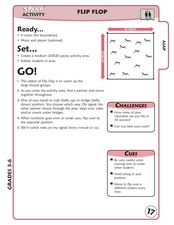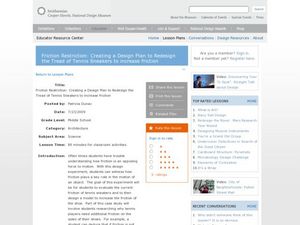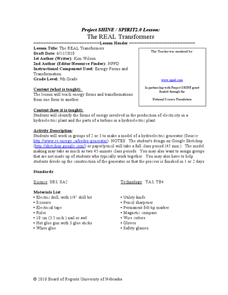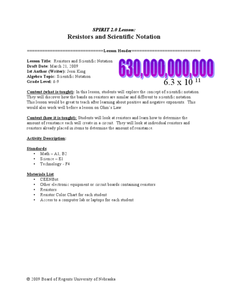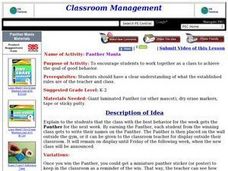Curated OER
Flip Flop
Students participate in a stretching warm-up exercise. In this physical education instructional activity, students warm up the large muscle groups by standing on their hands and legs in a belly up position or a belly down position....
Curated OER
Friction Restriction: Creating a Design Plan to Redesign the Tread of Tennis Sneakers to Increase Friction
Young scholars evaluate the friction of tennis sneakers and redesign them to increase friction. In this physics lesson, students calculate starting, sideways and forward stopping friction. Using quantitative data, they prove that...
Curated OER
Investigation: Blast Off!
First graders explore physics by participating in a class experiment. In this flight activity, 1st graders create a spinner using construction paper and snap cubes which fly when spun right in class. Students make predictions as to which...
Curated OER
Is That Icebox Green?
Seventh graders create a timeline of the development of electrical appliances. In this physics lesson, 7th graders explore energy consumption over the past 90 years. They create a poster about their chosen electrical device detailing its...
Curated OER
The REAL Transformers
Ninth graders create a model of a hydroelectric generator. In this physics lesson, 9th graders discuss how energy can be transformed from one form to another. They make a flow chart for different energy generating plants.
Curated OER
Resistors and Scientific Notation
Learners explain the importance of scientific notation. In this physics instructional activity, students determine the resistance of resistors using the colored bands. They compare and contrast scientific notation and resistor band...
Curated OER
Learn to Build a Rocket in 5 Days
Young scholars explore physics by participating in an engineering activity. In this rocket lesson, students define a list of scientific vocabulary terms such as "re-engineering" and "trade-off." Young scholars identify the rocket...
Curated OER
Electricity
Students identify the relationship between batteries, circuits and voltage. In this physics lesson, students investigate the way batteries are put into different apparatus. They discuss why different machinery need different voltage of...
Curated OER
Ionocraft Lifter
Students explore the different types of lifters through a series of activities. In this physics lesson, students explain the mechanics involved in the lifter designs. They compare aluminum versus zinc lifters.
Curated OER
Alka-Seltzer Rockets: How to Build Your Own Rocket
Students create a rocket using Alka-seltzer of baking soda and vinegar. In this physics lesson plan, students identify the factors affecting the length of time the rocket is propelled. They relate this activity to actual rocket launched...
Curated OER
Machines
Young scholars explain how machines make work easier. They calculate mechanical advantage. Students describe the six types of simple machines and calculate the ideal mechanical advantage for different types of simple machines.
Curated OER
Simple Machines, Survivor-Style
Students apply the principles of simple machines to create events in a wacky obstacle course. They work with a partner to prepare a visual presentation and an expository description of the obstacle course. Each group sequentially...
Curated OER
"Performance Qualities" Dance Lesson Plan
Eighth graders move across a space practicing a dance as they work on focus and energy.
Curated OER
Parachute
Learners participate in an instant activity as they enter the gym. They work with a parachute, moving it using different motions. They use their wrists, to move the parachute while moving in a circle, and play a game of Cat and Mouse...
Other popular searches
- Fluid Work Physics
- Work Physics Incline
- Power Work Physics
- Force and Work Physics
- Experiment on Work Physics
- Physics Work
- Energy Work Physics
- Work Physics Friction
- Work Physics Worksheet
- Physics Work and Power
- Physics Force and Work
- Physics Work Force


